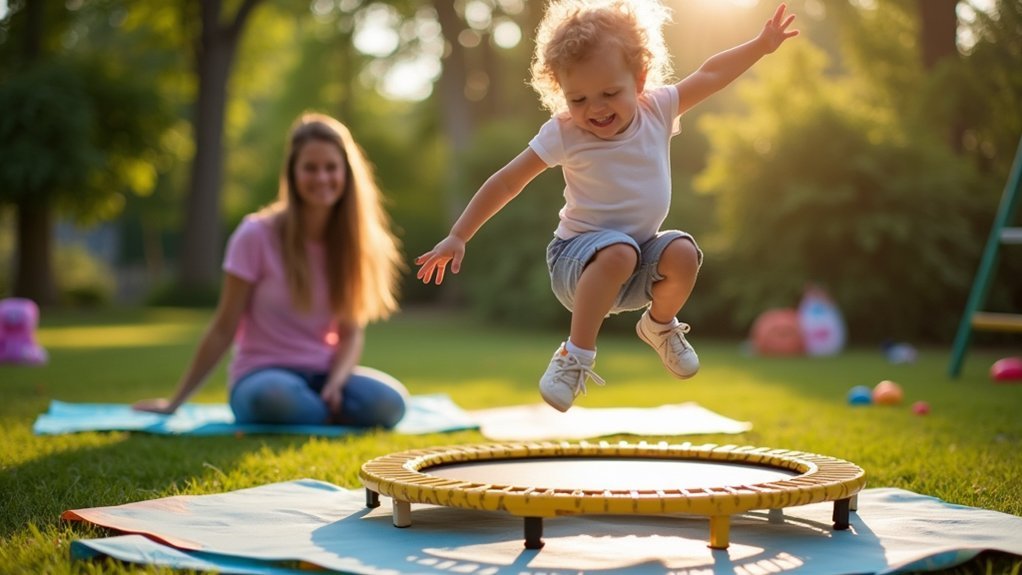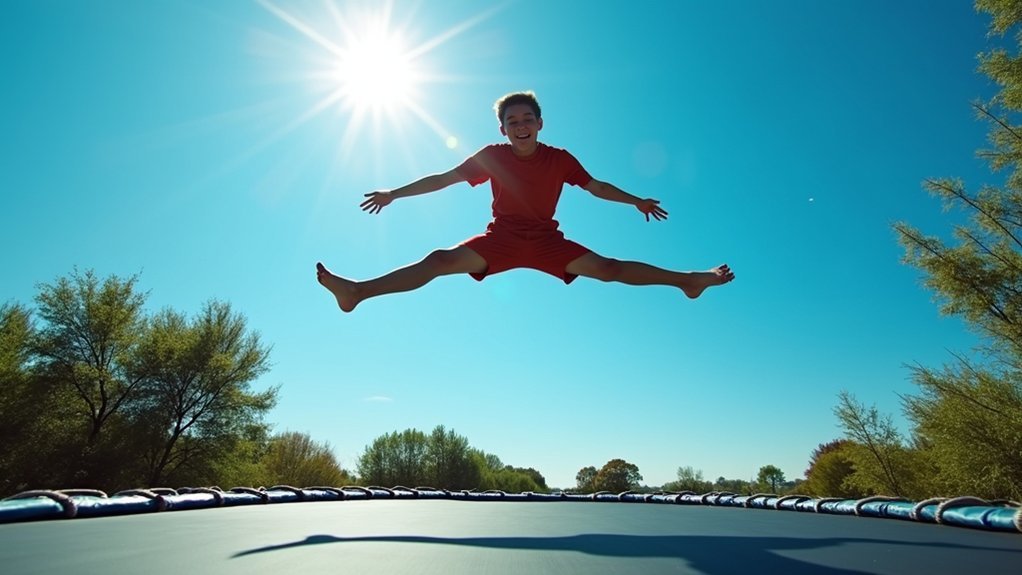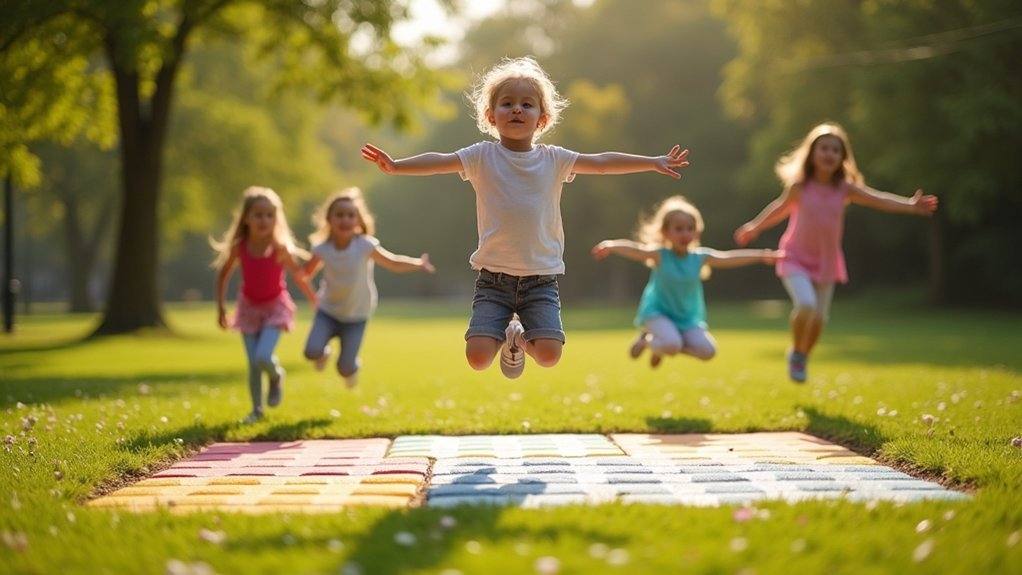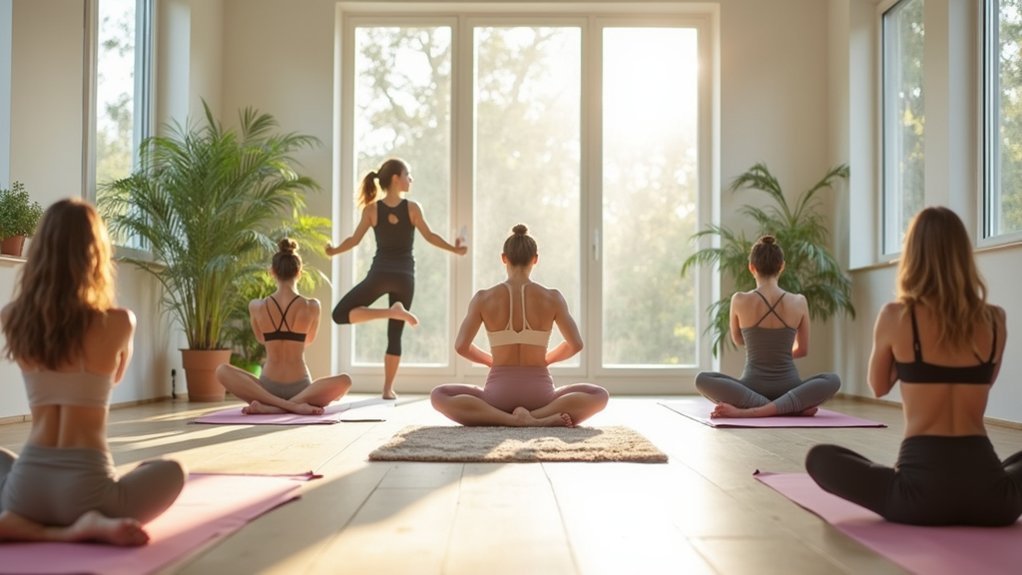Jumping enhances your coordination in three key ways: it develops spatial awareness as you navigate landings, improves balance by engaging stabilizing muscles, and strengthens timing skills through rhythmic movement patterns. When you bounce, your brain forms neural pathways that help predict movement changes while your body learns precise control. Mini trampolines are particularly effective for building these skills as they provide controlled rebound opportunities. The benefits extend far beyond just jumping technique.
Developing Body Awareness Through Mini Trampoline Exercises

While many parents view mini trampolines as simply fun play equipment, they actually serve as powerful tools for developing essential body awareness in children. When your child jumps, they’re learning to control their movements in space, enhancing their spatial awareness and coordination skills.
The mini trampoline engages both gross and fine motor skills simultaneously, as your child uses large muscle groups while refining their balance and control. The rhythmic movements of bouncing help them synchronize their timing as they master safe landings.
You’ll boost their proprioceptive awareness by introducing varied jumping patterns like alternating feet or mid-air twists. Regular sessions strengthen their core strength and joint stability, contributing to overall fitness that transfers to other physical activities.
This foundation of body awareness becomes instrumental in developing well-rounded coordination abilities.
Balance Enhancement With Controlled Bouncing Techniques
As children master basic jumping skills, controlled bouncing techniques become powerful tools for developing exceptional balance abilities.
When you introduce a mini-trampoline or balance ball, you’re enhancing proprioception and body awareness—fundamental elements for improved coordination skills.
Encourage your child to maintain a stable core while bouncing, which engages stabilizing muscles and strengthens overall balance.
Core stability during bouncing activates essential stabilizing muscles, creating a foundation for improved balance control.
Try incorporating rhythmic bouncing patterns set to music to develop timing and rhythm abilities essential for coordinated movement.
Challenge more advanced bouncers by having them balance on one foot during controlled bounces, dramatically improving single-leg balance.
For maximum spatial awareness development, create activities that combine bouncing with visual targets. Have children bounce toward specific markers, teaching them to coordinate their movements with environmental awareness.
Timing and Rhythm Skills From Rebound Training

Three key neurological pathways develop when children engage in rebound training activities. As they bounce on trampolines, their brains create stronger connections between movement patterns and spatial awareness.
You’ll notice improved coordination as your child learns to synchronize their jumps with the surface’s rebound.
The benefits extend beyond simple jumping:
- Enhanced proprioception – Children develop better body awareness as they constantly adjust to changing forces during jumps.
- Improved rhythmic abilities – The repetitive nature of bouncing establishes consistent timing patterns that transfer to other activities.
- Advanced anticipatory skills – Regular rebound training teaches the brain to predict and react to movement changes.
Adding music to jumping sessions further reinforces timing skills, while building balance and agility that benefit numerous physical activities.
Frequently Asked Questions
What Skills Does Jumping Develop?
Jumping develops your bilateral coordination, gross motor skills, spatial awareness, timing, and rhythm. It also boosts your cognitive function by creating stronger brain-body connections that improve your overall athletic performance and reduce fall risks.
How Does Jumping Rope Improve Coordination?
Jumping rope improves your coordination by forcing you to synchronize hand and foot movements with precise timing. You’ll develop better balance, enhance bilateral motor skills, and boost hand-eye coordination through consistent practice.
How to Improve Coordination in Long Jump?
Practice your approach run for consistent rhythm. Incorporate plyometric exercises to boost explosive power. Use drills focusing on take-off mechanics and arm swing. Add visual runway markers to maintain proper stride timing. Strengthen your lower body consistently.
Do Jumping Jacks Improve Coordination?
Yes, jumping jacks improve your coordination considerably. They require you to move both sides of your body simultaneously, enhance hand-eye coordination, develop midline crossing abilities, and boost your overall body awareness and rhythm.
In Summary
As you’ve discovered, jumping isn’t just fun—it’s a coordination powerhouse. By incorporating mini trampoline exercises, you’ll develop better body awareness. You’re also building balance through controlled bouncing techniques, while simultaneously sharpening your timing and rhythm skills. Whether you’re a fitness enthusiast or simply looking to improve your coordination, regular jumping activities will help you move with greater precision and confidence in everyday life.





Leave a Reply